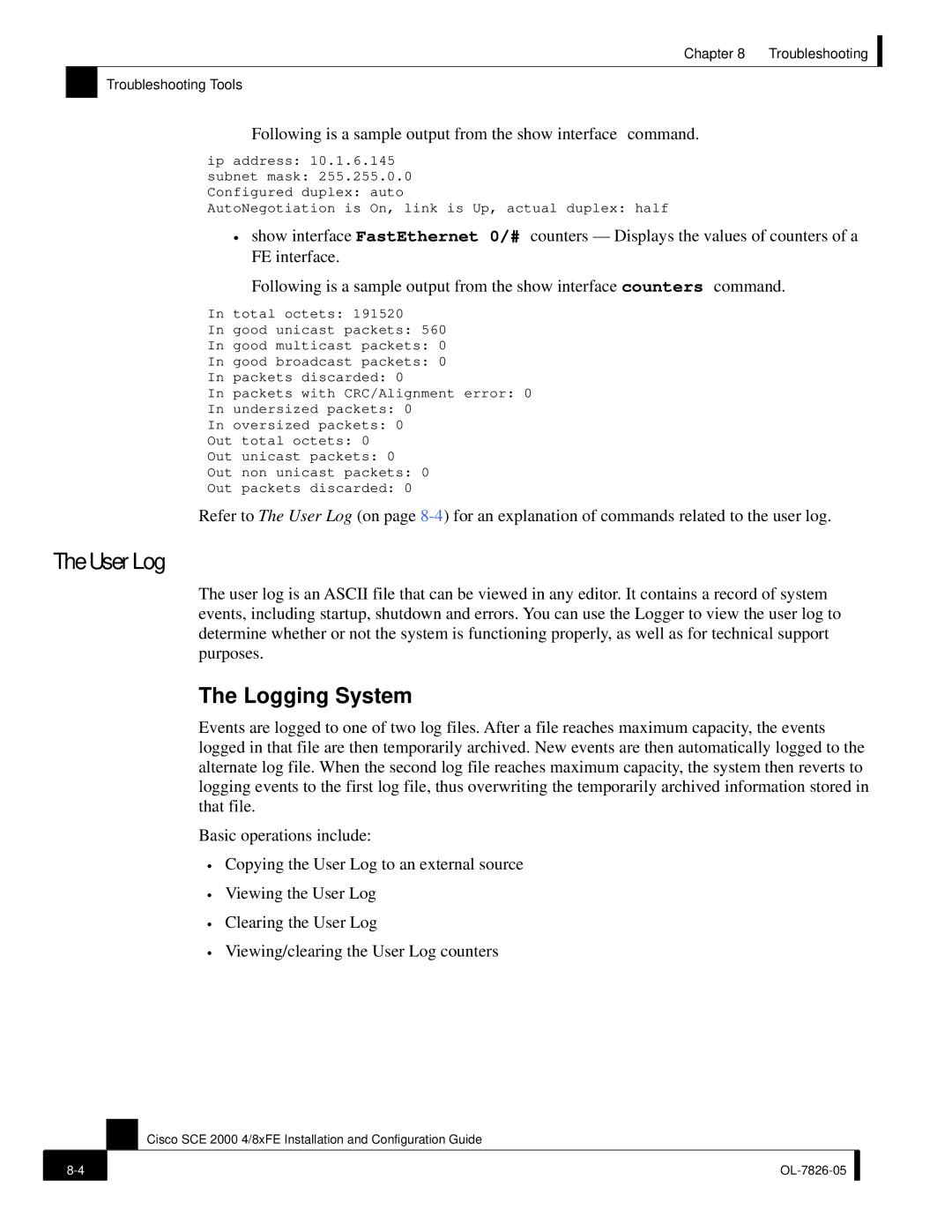
Chapter 8 Troubleshooting
Troubleshooting Tools
Following is a sample output from the show interface command.
ip address: 10.1.6.145
subnet mask: 255.255.0.0
Configured duplex: auto
AutoNegotiation is On, link is Up, actual duplex: half
•show interface FastEthernet 0/# counters — Displays the values of counters of a FE interface.
Following is a sample output from the show interface counters command.
In total octets: 191520
In good unicast packets: 560
In good multicast packets: 0
In good broadcast packets: 0
In packets discarded: 0
In packets with CRC/Alignment error: 0
In undersized packets: 0
In oversized packets: 0
Out total octets: 0
Out unicast packets: 0
Out non unicast packets: 0
Out packets discarded: 0
Refer to The User Log (on page
The User Log
The user log is an ASCII file that can be viewed in any editor. It contains a record of system events, including startup, shutdown and errors. You can use the Logger to view the user log to determine whether or not the system is functioning properly, as well as for technical support purposes.
The Logging System
Events are logged to one of two log files. After a file reaches maximum capacity, the events logged in that file are then temporarily archived. New events are then automatically logged to the alternate log file. When the second log file reaches maximum capacity, the system then reverts to logging events to the first log file, thus overwriting the temporarily archived information stored in that file.
Basic operations include:
•Copying the User Log to an external source
•Viewing the User Log
•Clearing the User Log
•Viewing/clearing the User Log counters
Cisco SCE 2000 4/8xFE Installation and Configuration Guide
| ||
|
|
|
